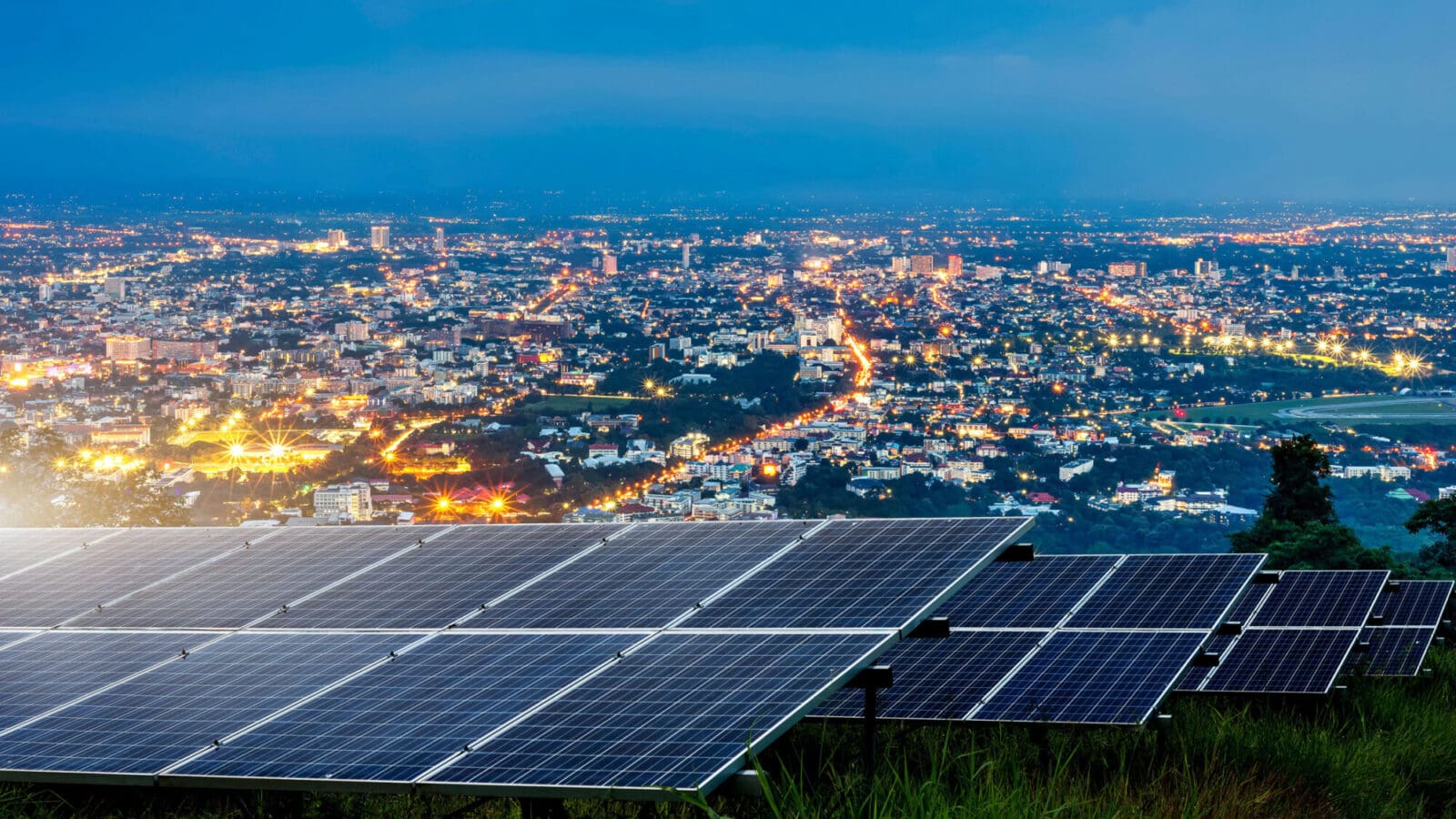
Green grid goal is practical for NJ, researcher testifies
By
on
Jenkins, assistant professor of mechanical and aerospace engineering and the Andlinger Center for Energy and the Environment, leads a team of researchers who modeled pathways to meet New Jersey’s stated policy goal of 75% of power provided by renewables and 100% carbon-free by 2050. Last Monday, he described options to meet the goal, outlined in a 2018 executive order from Governor Phil Murphy, to members of the New Jersey Senate Environment and Energy Committee.

“The goal of this study is to provide an independent, detailed assessment of key technology and policy options and choices, and their implications as we chart the path to 100% clean electricity,” said Jenkins.
Jenkins’ team of energy researchers at the Princeton ZERO Lab modeled three broad scenarios for the state and found varied results:
* a business-as-usual scenario based on policies in place at the end of 2020, which excludes the goal of a carbon-free electricity supply by 2050. In this scenario, electricity supply costs would fall by 19% but a carbon-free power supply would not be achieved.
* a scenario that modeled outcomes based on policies that have been committed to but not yet implemented, including the goals of 75% renewable electricity and 100% carbon-free electricity by 2050, along with the state’s existing goal to curb greenhouse gases statewide by 80% by then. The study found that the most affordable way to meet these goals was for New Jersey to buy a significant amount of clean energy from out of state.
* a scenario in which New Jersey decarbonizes its grid primarily by building in-state clean energy resources, such as development of offshore wind farms and solar projects. The outcome of this scenario would allow the state to meets its goals, but it would be more expensive for New Jersey power customers.
The findings show that meeting New Jersey’s goal of procuring a carbon-free electric supply by midcentury is possible, even as peak electric demand is anticipated to grow by up to 85% from rapid building and vehicle electrification.
“First and most importantly, a transition to 100% carbon-free electricity is feasible while maintaining necessary reliability and with reductions in bulk electricity supply costs,” said Jenkins.
Jenkins told legislators that the lowest-cost option would take advantage of New Jersey’s membership in a multi-state electric grid called the PJM Interconnect. The grid, made up of numerous utilities and power producers, stretches through Pennsylvania, New Jersey and Maryland (the original “P, J & M”) to North Carolina, and as far west as parts of Kentucky, Michigan, Indiana and Illinois. Under the cheapest option, New Jersey would save money by importing solar and wind electricity from states with lower land costs and better renewable resource quality, such as solar power from North Carolina or wind power from Indiana. This strategy represents the cheapest path for the state, provided other states do not similarly aggressively decarbonize their power sectors. In that case, greater demand for renewables across the region would drive up the cost of imports for New Jersey, prompting reliance on more expensive in-state resources.

The option of increasing electricity imports would also reverse New Jersey’s traditional reliance on in-state energy. Currently, the state only imports about 10 percent of its power. Under the lowest-cost option, that would increase to about 65 percent by 2050, said Qingyu Xu, the lead researcher on the study and a postdoctoral research scholar in Jenkins’ ZERO lab, who added his comments via email.
If New Jersey chose to generate more power in state, it could scale up projects such as offshore wind and smaller-scale distributed solar installations, which are state priorities under current policies. But Xu noted that would involve more cost for the state’s ratepayers.
“We find that the lowest-cost pathway to a carbon-free electricity supply departs in important ways from New Jersey’s current approach to policy, which prioritizes in-state and distributed energy resources,” said Jenkins.
Cheaper options would include keeping the state’s three commercial nuclear reactors open beyond 2030 and deploying large, “utility-scale” solar projects that deliver lower prices due to economies of scale. The existing nuclear power plants also provide a hedge against higher costs for imported renewable electricity if other states across the region pursue decarbonization goals, or if natural gas prices or renewable energy construction costs are higher than expected.
Jenkins said policymakers need to evaluate the benefits or drawbacks of the different ways to source power because their implications extend far beyond electricity supply costs to include effects on the economy and labor force, environment, and quality of life.
Although unfavored by environmentalists and difficult to site, building natural gas plants was a strategy identified as useful in all scenarios. While new gas plants raise important concerns about pollution and additional greenhouse gases, Jenkins explained that increasing generating capacity would keep the cost of power down and help meet growing peak demands from electric vehicles and the adoption of electric heat pumps to efficiently heat water and buildings. Jenkins said total generation from natural gas and associated air pollution, greenhouse gas emissions, and impacts associated with gas extraction would steadily fall over time, especially if the state’s existing nuclear plants are maintained. In the two scenarios developed to meet decarbonization goals, the plants would need to run on zero-carbon fuels, such as sustainably-produced hydrogen or ammonia by 2050, at which point they would operate only when wind and solar power are both largely unavailable.
Lawmakers said affordability is important, and that they would have to weigh it against the idea of importing more electricity. They asked Jenkins about making EV charging infrastructure more accessible, to which he replied that additional public investments in charging infrastructure are important, as an earlier resolution in the committee meeting proposed.
After the testimony, Senator Bob Smith, the committee chair, said he would take Jenkins up on his offer to model other scenarios and talk further.
“We’re going to put you on speed dial,” said Smith, who represents parts of Somerset and Middlesex counties.
For more information on the new research, download New Jersey’s Pathway to a 100% Carbon-Free Electricity Supply: Policy and Technology Choices Through 2050 here.
The new study was published as a working paper for public dissemination prior to peer review. The research team is preparing additional publications based on this report for peer review, which may be revised.
Additional authors of “New Jersey’s Pathway to a 100% Carbon-Free Electricity Supply: Policy and Technology Choices Through 2050” include former Princeton postdoctoral researcher Chuan Zhang, now an assistant professor at Peking University, and associate research scholar Neha Patankar at Princeton.
This project was supported by Public Service Enterprise Group (PSEG) through Princeton E-ffiliates Partnership.







